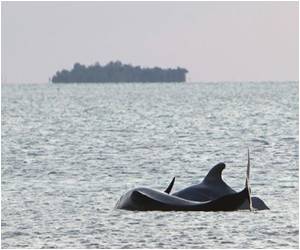New research has revealed that iron may not have played an important role in the formation of the North Pacific Ocean.

A new study led by Woods Hole Oceanographic Institution (WHOI) scientists and colleagues at the University of Bristol (UK), the University of Bergen (Norway), Williams College and the Lamont Doherty Earth Observatory of Columbia University has determines that a different mechanism-a transient "perfect storm" of nutrients and light-spurred life in the post-Ice Age Pacific.
Its findings resolve conflicting ideas about the relationship between iron and biological productivity during this time period in the North Pacific with potential implications for geo-engineering efforts to curb climate change by seeding the ocean with iron.
Phoebe Lam, a co-author of the study and an international team of colleagues revisited the sediment core data to directly test the earlier hypothesis and sampled GGC-37, a core taken from a site near Russia's Kamchatka Peninsula, about every 5 centimeters, moving back through time to before the biological bloom began.
Then they analyzed the chemical composition of their samples, measuring the relative abundance of the isotopes of the elements neodymium and strontium in the sample, which indicates which variant of iron was present.
The isotope abundance ratios were a particularly important clue, because they could reveal where the iron came from-one variant pointed to iron from the ancient Loess Plateau of northern China, a frequent source of iron-rich dust in the northwest Pacific, while another suggested the younger, more volcanic continental shelf was the iron source.
Advertisement
The study was published in the journal Nature Geoscience.
Advertisement









